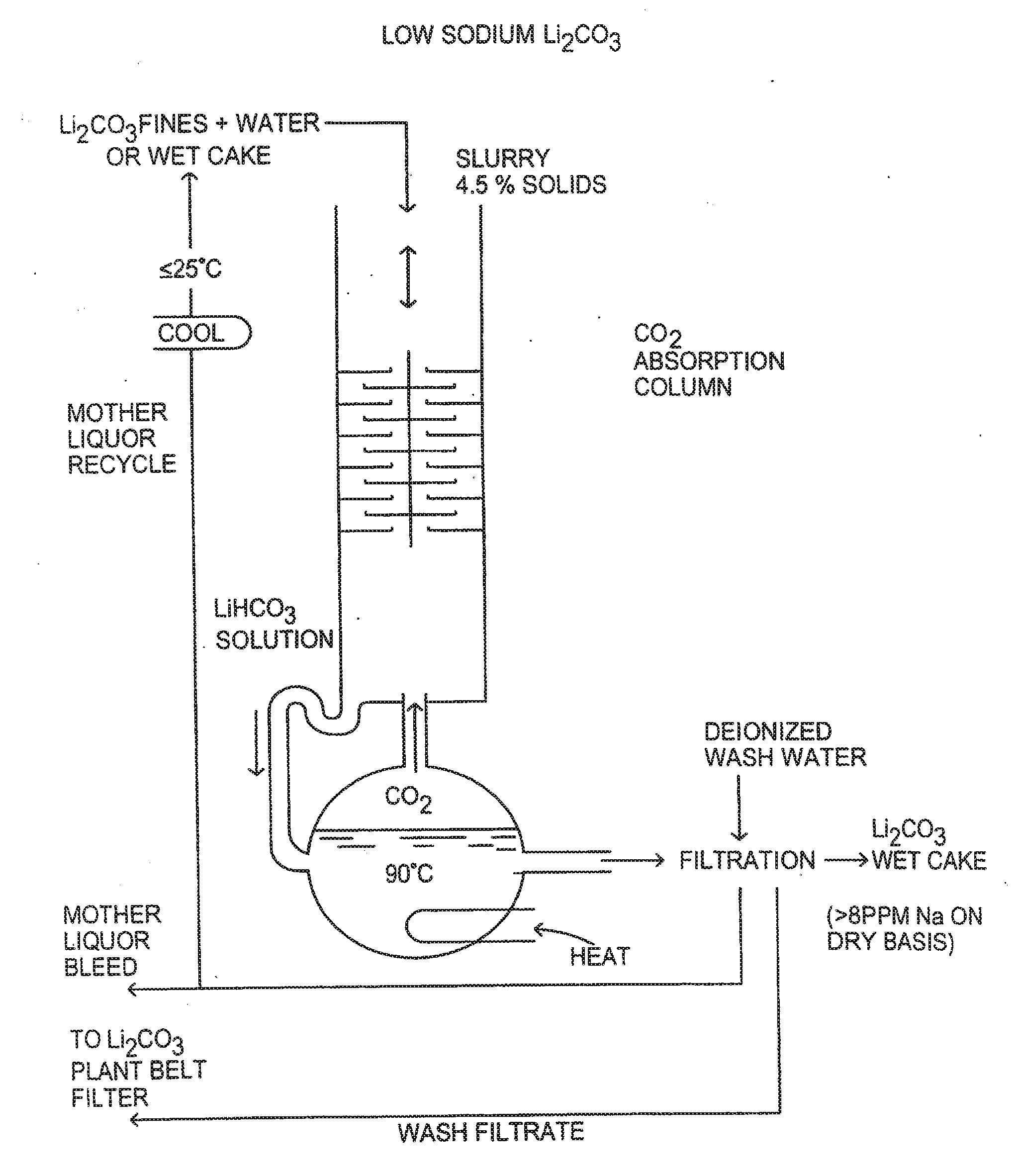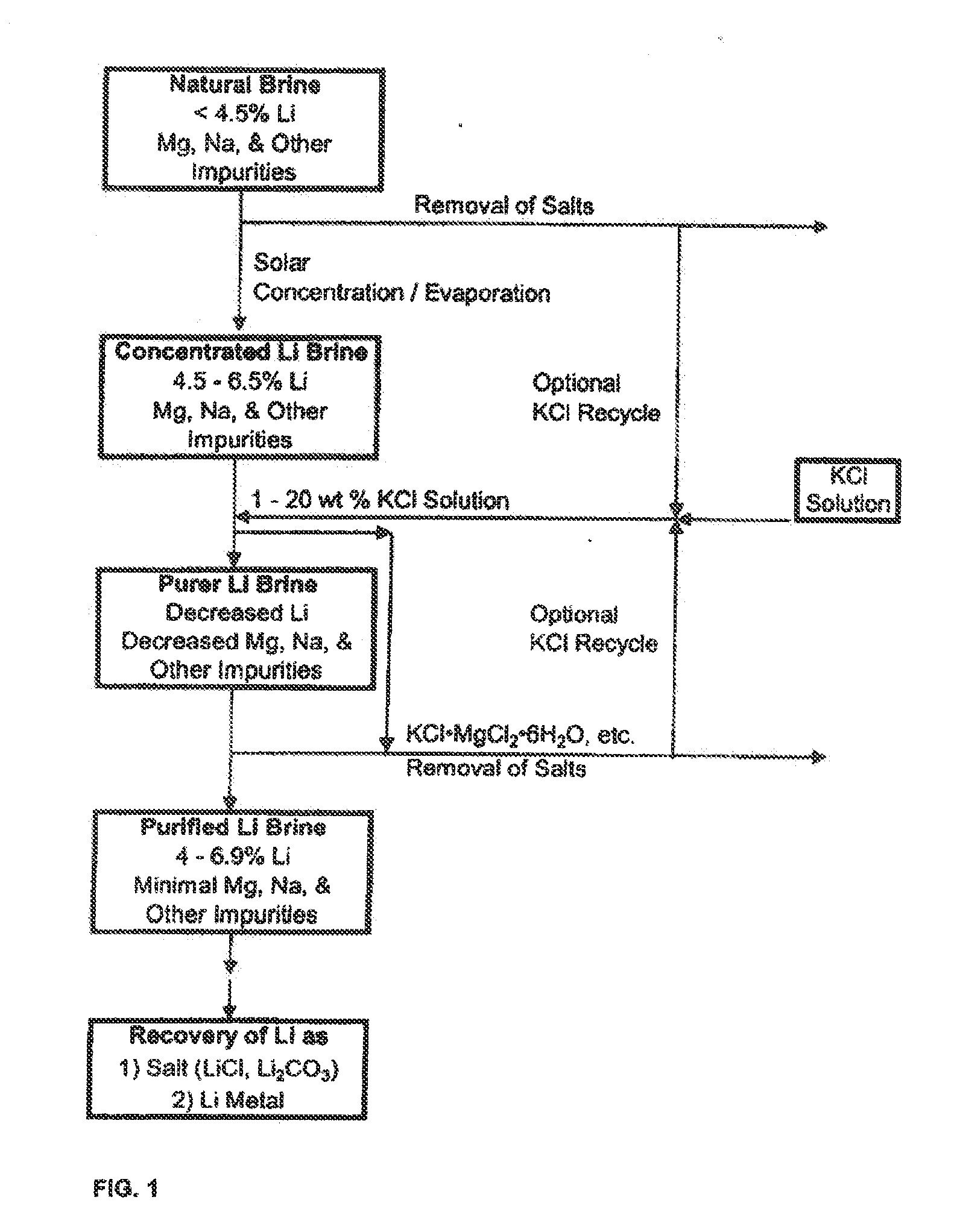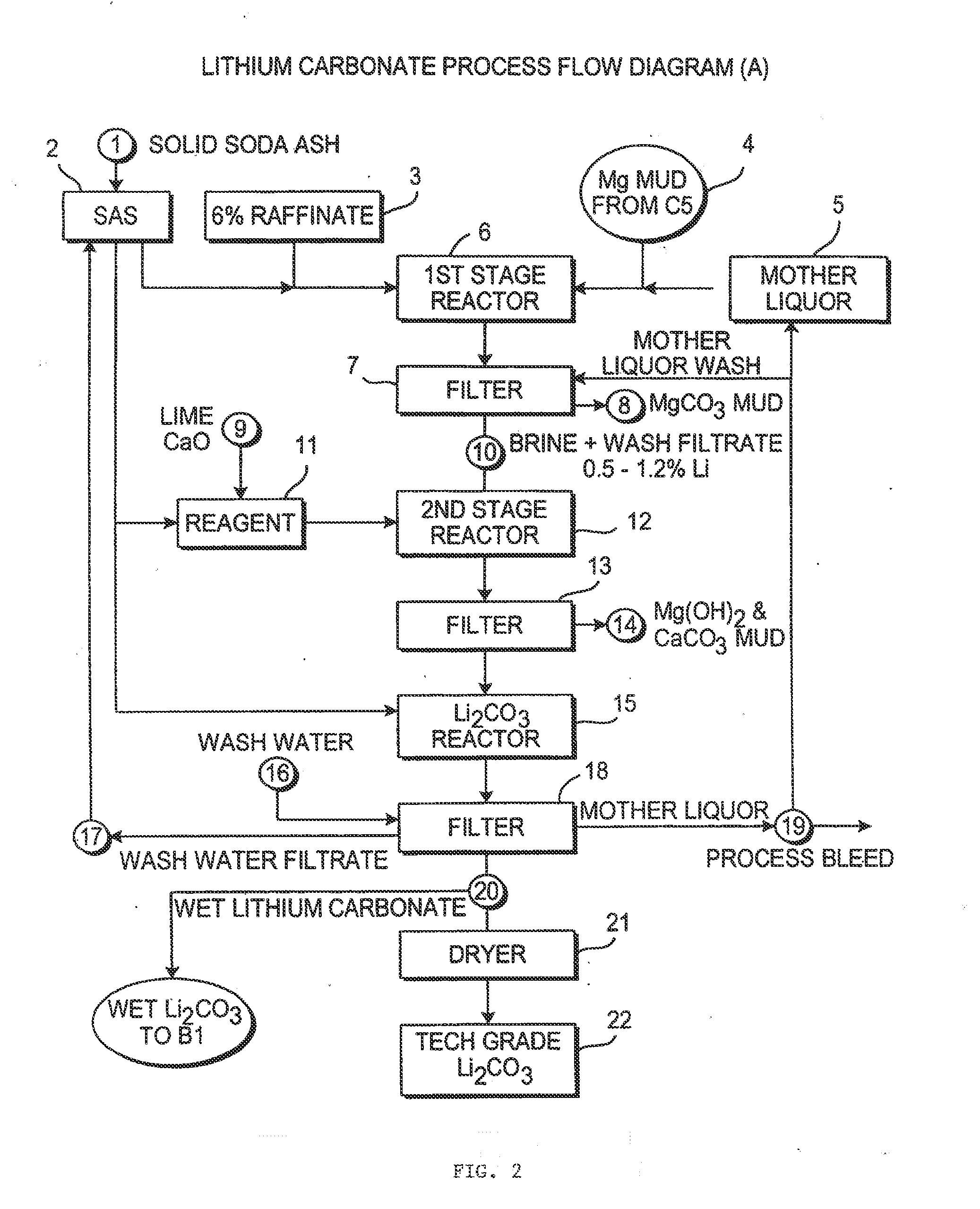Production of high purity lithium compounds directly from lithium containing brines
a technology of lithium ion battery and high purity, which is applied in the direction of lithium compounds, alkali metal carbonates, separation processes, etc., can solve the problems of shortening the useful life affecting the quality of lithium ion batteries, so as to reduce the number of major processing steps, reduce the loss of lithium, and reduce the magnesium level in the brine
- Summary
- Abstract
- Description
- Claims
- Application Information
AI Technical Summary
Benefits of technology
Problems solved by technology
Method used
Image
Examples
example 1
Decreased Mg to Li Ratio in Brine by KCl Addition
[0167]A solution of 0.63 g KCl in 2.01 g deionized water was added to 10.00 g brine 1 having the analysis shown in Table 5 at 20° C. Upon swirling the brine a fine, white precipitate of carnallite formed and was allowed to settle. The supernatant liquid was decanted as brine 2. The Mg / Li weight ratio in the brine had decreased from 0.73 to 0.41.
example 2
[0168]A solution of 15.18 g KCl in 28.32 g deionized water at 95° C. was added by pipet to 150.1 g brine 1 with mixing. A fine, white precipitate of carnallite formed and was removed by vacuum filtration from product brine 3. The Mg / Li weight ratio in the brine had decreased from 0.73 to 0.37.
example 3
[0169]A solution of 15.18 g KCl in 29.5 g deionized water at 108° C. was added to 150.1 g brine 1 with mixing. A fine, white precipitate of carnallite formed and was removed by vacuum filtration from intermediate brine 4. The Mg / Li weight ratio in the brine had decreased from 0.73 to 0.31. After removing a small sample of 4, the remainder of 4 was concentrated at a range of 20-60° C. and at a pressure of ˜500 μm Hg with a high vacuum pump. Additional carnallite precipitated and was separated from final brine 5 by vacuum filtration at 20° C. The Mg / Li weight ratio in the final brine was 0.22.
[0170]Results for examples 1, 2 and 3 are shown in Table 5 below:
TABLE 5ID%%% Mg / ppmppmPpmBrineNumberLiMg% LiKNaCaFeed14.623.360.73670630970Example 124.151.720.416300570890ProductExample 234.661.740.37118005901000ProductExample 344.721.440.31104005801000IntermediateExample 355.701.260.2241006901200Product afterConcentration
PUM
| Property | Measurement | Unit |
|---|---|---|
| Temperature | aaaaa | aaaaa |
| Temperature | aaaaa | aaaaa |
| Temperature | aaaaa | aaaaa |
Abstract
Description
Claims
Application Information
 Login to View More
Login to View More - R&D
- Intellectual Property
- Life Sciences
- Materials
- Tech Scout
- Unparalleled Data Quality
- Higher Quality Content
- 60% Fewer Hallucinations
Browse by: Latest US Patents, China's latest patents, Technical Efficacy Thesaurus, Application Domain, Technology Topic, Popular Technical Reports.
© 2025 PatSnap. All rights reserved.Legal|Privacy policy|Modern Slavery Act Transparency Statement|Sitemap|About US| Contact US: help@patsnap.com



